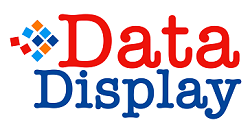
Technological advancements in the mapping and surveying field have displaced traditional methods, offering superior solutions compared to previous practices. Among these innovations, drones have turned into the mavericks of the field of mapping and surveying. They have given a completely new meaning to the work of mappers and surveyors.
In this article, we’ll explore the vast potential of drones in mapping and surveying through examples and applications. It does not matter whether you are a professional surveyor, or just someone who is curious about the capabilities of drone devices, the article outlined here is a must-read to help you widen your knowledge base and improve your practical skills.
Understanding Drone Mapping and Surveying:
Drones serve as the primary tool for mapping and surveying, utilizing unmanned aerial vehicles (UAVs) equipped with specialized cameras and sensors. These devices capture high-resolution imagery and collect data effectively. The drones can go above far areas and obtain aerial, detailed photographs which are used for generating correct maps, 3D models, and point clouds.
Such technology commits the professionals to not only accurate measurement, but also to identifying topographical information and developing sophisticated maps of both natural and manmade structures.
Advantages of Drone Mapping and Surveying:
Enhanced Efficiency and Time Savings:
In contrast to standard surveying conducted by the human surveyor, drones make it possible to save time and effort and obtain better results with their increased efficiency. Drones can cover extensive regions within a brief timeframe which compared with traditional surveying on ground level would take ages. Drones can be made to manoeuvre automatically and pre-programmed routes, so data and images can be gotten simultaneously without the delay of manual labour and these speeds up the mapping process.

High Precision and Accuracy:
Drones equipped with advanced sensors like GNSS and LiDAR offer precise positioning and rich data collection capabilities, aiding in the process. The high accuracy of the scanners enhances the process to a new level, resulting in detailed maps, 3D models, and point clouds. The data collected by drones can be effortlessly brought into GIS software application saving valuable time, as well as allowing accurate measurements and analysis.
Cost-Effectiveness:
Drone-based mapping and assessment of an area can be a cheaper substitute for conventional methods. The use of drones in wildlife surveillance results in considerable cost savings since they do not require extensive use of ground-based surveys which are labour consuming nor manned aircraft.
Besides that, drones can reach into inaccessible or dangerous spots which upon other means of surveyors are impossible or quite dangerous. This two-in-one capability—along with the capacity to collect enormous volumes of data in just a brief amount of time—makes drones a cost-effective solution for mapping and surveying operations.
Applications of Drone Mapping and Surveying:
Land Surveying and Planning:
Drone is a key element of a land surveying process, and the device helps to obtain accurate measurements as well as topographic data used different applications. This helps in bounding line surveys, contour mapping, and site planning. Through the use of drones, the surveyors can survey the terrain, locate obstructions and dangers, and prepare for all settlement works and development in a precise manner.
Construction and Infrastructure Monitoring:
In the construction field, drones are used as construction sites are monitored, progress tracked, and compliance of project confined by them is ensured. Aerial images and 3D models taken by drones support planning activities by revealing problems, allowing stockpile volumes to be verified and comparing actual conditions on ground to design ones. It helps in project management and reduces the chances of the project getting into the last-minute complications due to errors or delays.
Environmental Monitoring and Management:
Drones have revealed themselves to be a promising insight instrument for monitoring and managing environment. They can be used for measuring resources available in nature, supervising and scanning plant health and pinpointing land cover changes. Aerial survey drones fitted with thermal cameras can detect outbursts of heat that are measurable, thereby enabling the detection of forest fires and wildlife conservation. Drone data is used among the best information sources to make environmental protection and resource management decisions.
Choosing the Right Drone for Mapping and Surveying:
Choosing a drone for mapping and surveying should be done carefully and the following factors should be considered namely flight time, payloads capacity, camera quality, and software compatibility. It is of paramount importance to pick a drone which correlates with the exactly mapped out demands of your mapping and survey ventures. Consultation with industry experts and test manufacturing top drone ranging from ideaForge can help you to choose the best suited drone for your discernment.
Conclusion:
Drones have improved the technique of mapping and surveying by allowing efficiency, precision and saving of costs at a way like never before. From land surveying to infrastructure monitoring and the environment, to name a few, drones have very broad range of uses in different industries. Applications of drone technology offer an ability to automate, enhance accuracy of data, and make better decisions, which make professionals’ work more efficient.




